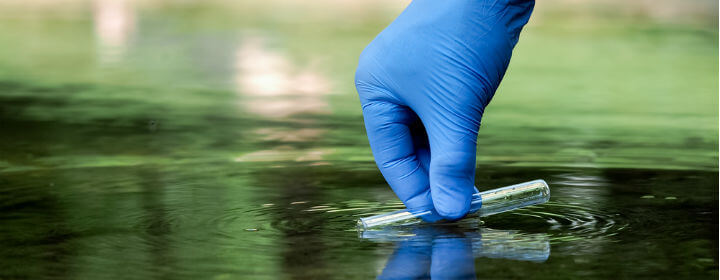Mysophobia or
Misophobia
.
People with an excessive fear of germs believe the
world to be a ‘filthy place’ and may develop obsessive-compulsive disorders. As
a result, they are always washing or cleaning well beyond a concern with
cleanliness. They are known to spend major parts of their day doing these
activities over and over.
BY
JACOB OLESEN
Mysophobia

Thus, Mysophobia is the excessive and often
irrational fear of microbes or getting contaminated with germs.
Mysophobia is also known as germophobia.
Fear
of Germs Phobia - Mysophobia
People with an excessive fear of germs
believe the world to be a ‘filthy place’ and may develop obsessive-compulsive
disorders.
As a result, they are always washing or
cleaning well beyond a concern with cleanliness.
They are known to spend major parts of
their day doing these activities over and over.
Mysophobics may also spend vast amounts of
money on buying cleaning products and exposing themselves more than necessary
to the harmful chemicals which many of them contain.
It is important to note the difference
between ‘being tidy/orderly’ to being a Mysophobe.

Many people with the extreme fear of germs
also tend to think about microbes all the time.
They fear getting contaminated from dirt,
dust, grime or people who are sneezing or coughing.
The more often a Mysophobe falls sick, the
likelier s/he is bound to believe the need to clean. This can severely impact
one’s daily functioning.
Causes
of the fear of germs phobia

The sufferer feels the need to wash his/her
hands frequently, which is one of the characteristics of OCD.
Naturally, in case of Mysophobia, the
motivation to frequently wash stems from the fear of microbes unlike that in
the OCD where it is more of a matter of following routine.
That being said; most patients are known to
suffer from both conditions.
A thorough medical evaluation is hence
necessary to determine if it is Mysophobia or OCD.
Heredity and genetics are believed to have
a strong link to the fear of germs phobia.
Children with an obsessive-compulsive
parent or caregiver are more likely to become Mysophobes.
Additionally, a traumatic (personal or
witnessed) event in the past or sometimes even a random event can trigger
Mysophobia.
Media, learning about germs at school or
getting sick after coming in contact with germs can reinforce one’s belief’s
about microbes to the extent that the individual learns to excessively fear
germs.
Symptoms
of Mysophobia
Depending on the level of fear, different
symptoms may be seen in the individual:
Physical symptoms of a panic attack (in
what is perceived to be the presence of germs) such as shaking, dry mouth,
sweating, nausea, rapid and irregular heartbeat etc are seen in people
suffering from the excessive fear of germs. The patient is also likely to
indulge in unreasonable behavior or actions like:
o Washing frequently
and excessively.
o Refusing to use
public bathrooms.
o Avoiding all kinds
of social activities or places that include coming in contact with ‘germy’
people or animals.
o Refusing to share
personal items like combs, brushes, or food with anyone.

Treatment for fear of germs
o A combination of
therapies is recommended for treating phobias like Mysophobia and anxiety
disorders like OCD. These include drugs, cognitive behavior therapy, exposure
and gradual desensitization therapies as well as relaxation training.
o Exposure therapy
consists of helping the phobic relearn how to encounter germs gradually until
he is able to refrain from washing his hands. The individuals also learn to
focus on calming techniques and develop the ability to remain in a
‘contaminated environment’ without having a panic attack.
o Cognitive behavior
therapies help the person with a fear of germs change his attitude and thoughts
about them. This involves writing down negative and positive thoughts such as
“I fear I will die from germs” to “Germs are sometimes healthy and useful to
us” and so on. The patients are then asked to decide on beliefs that are
healthier and useful to them.
Germs are a necessary part of our lives and
for a person with excessive fear of germs; life can be very stressful and
complicated.
However, there is hope and many treatment options that can help one heal completely from Mysophobia.
Welcome
to FEAROF – I’m Jacob, creator of
this site.
Are
you suffering from panic attacks or general anxiety?
Then
let me tell you that you’re in the right place.
Here’s
how this site can help you:
Discover
the cause of your fear
Understand
your symptoms
Overcome your
phobia
I
can help by sharing techniques that can get you on the right track towards
a life without fear.
https://www.fearof.net/fear-of-germs-phobia-mysophobia/
You might also like:
CLICK HERE . . . to view . . .
https://puricare.blogspot.com/2020/11/blog-post_59.html
...........................................................................................................................................................................................................................................................................................
 Your tap water might be
dangerous to drink
Your tap water might be
dangerous to drink
CLICK HERE . . . to view . . .
https://puricare.blogspot.com/2020/05/signs-your-tap-water-might-be-dangerous.html
...........................................................................................................................................................................................................................................................................................
 How
Long Can Viruses Live on Surfaces?
How
Long Can Viruses Live on Surfaces?
CLICK HERE . . . to view . . .
https://puricare.blogspot.com/2020/03/how-long-can-viruses-live-on-surfaces.html
...........................................................................................................................................................................................................................................................................................
 Pray
to God, and Wash Your Hands
Pray
to God, and Wash Your Hands
CLICK HERE . . . to view . . .
https://puricarechronicles.blogspot.com/2020/07/pray-to-god-and-wash-your-hands-pray.html
...........................................................................................................................................................................................................................................................................................
Florence Nightingale
CLICK HERE . . . to view . . .
https://puricarechronicles.blogspot.com/2020/05/how-florence-nightingale-changed-world.html
...........................................................................................................................................................................................................................................................................................

Biblical Leprosy
CLICK HERE . . . to view . . .
https://puricarechronicles.blogspot.com/2020/08/biblical-leprosy-jesus-freely-touched.html











